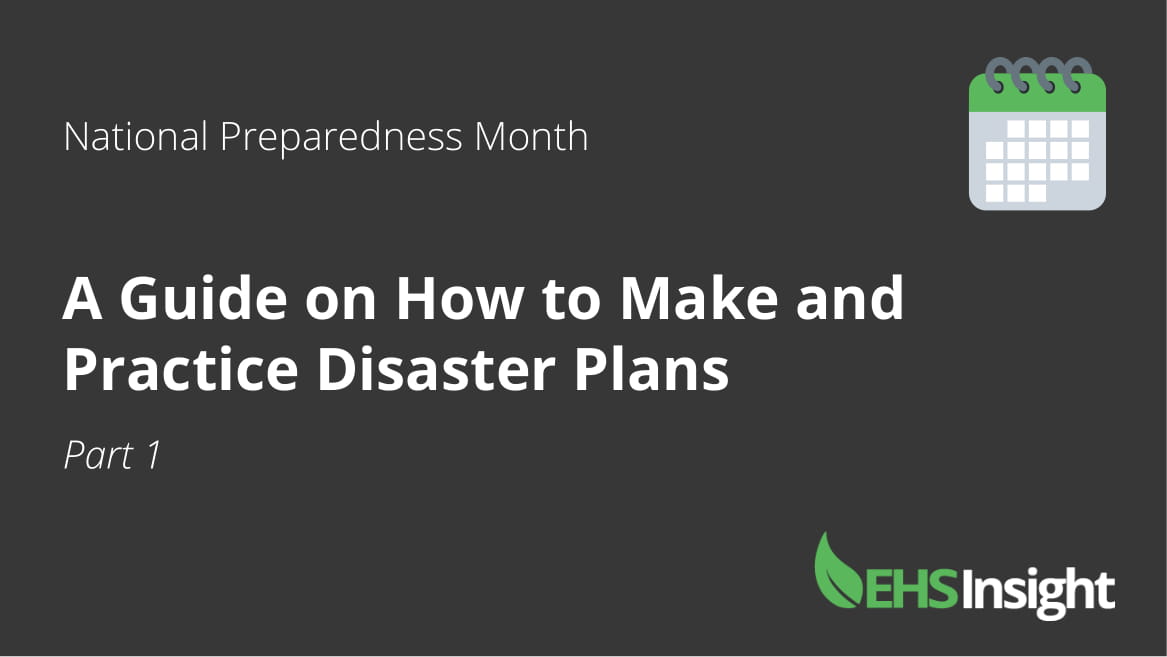September is National Preparedness Month, and there’s no better time to review your disaster plans.
Use this guide to help you create and practice to prepare for worst case scenarios – because yes, they can happen to you.
What’s in Your Disaster Tool Kit?
No one’s immune from disasters, whether it’s a force of nature or an internal incident with devastating effects. Even with a robust safety program, your organization and employees could still find themselves facing dire situations that could leave them vulnerable to safety incidents.
To combat this, it’s important your organization invest time and resources in disaster preparedness.
Identify Types of Disasters
Start by recognizing what types of disasters your company could be most susceptible to. These include any types of natural disasters, such as tornadoes or wildfires, chemical or nuclear disasters, acts of violence, or fires.
Sign Up for Alerts
Technology can help you better prepare for disasters in your area. Sign up for emergency alerts, such as weather-related issues or public safety alerts. The Integrated Public Alert and Warning System (IPAWS) can send alerts directly to your smartphone and keep you in the know. You can also send text messages to your employees to ensure they're aware of any incidents.
Designate Evacuation Routes and Shelters
It’s important to have established safety routes and shelters ahead of time so that your employees know where to go when disaster strikes.
Use Social Media
Social media can be a quick, effective way to reach a large amount of people in a short amount of time. You might consider creating a company Facebook group specifically for disasters and encourage your employees to join it. However you use social media in your disaster planning, make sure you also tout the value of being in the know to increase membership.
Emergency Communication Director
You should designate someone in your organization to handle questions and provide ongoing communication with employees, police officers, and press. It’s helpful to have a single source that can relay information to avoid the chance of wrong information being spread.
Creating and Refining Your Disaster Plan
Identifying potential disasters and obstacles to emergency preparedness gives you a foundation to bolster your response plan.
Put your plans into writing and reinforce with visual elements when necessary, such as building maps, escape routes, and meeting places. Include emergency phone numbers and other communication methods in your plan. Make your plans accessible to employees and leadership. Having multiple copies (or digital copies in a shared database) can ensure anyone can access the information at any given time.
It’s not easy being prepared for every potential emergency, especially since disasters don’t plan ahead. The best thing you can do for your employees and your company is to create seamless communication at every angle.
As business evolves, so should your disaster preparedness plan. Escape routes may change. Weather issues may become more of a threat. Emergency shelter locations can vary. Each year, make sure you review your plan and tweak and refine as needed.
Put Your Plan into Practice
Ongoing training and practice can help your employees feel more confident if a disaster were to occur. It’s not enough to simply post photos of escape routes and answer common questions in the employee handbook. You should also actively hold drills that help team members prepare accordingly. Time evacuations and other practices and look for potential ways to improve your plan.
Take advantage of times when disasters are more likely (e.g. hurricane season for susceptible areas) to give your employees a refresher course.
Watch for Part Two of our Disaster Planning Series, where we’ll explore life-saving skills and how to put them to work in your organization.
